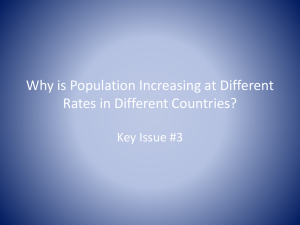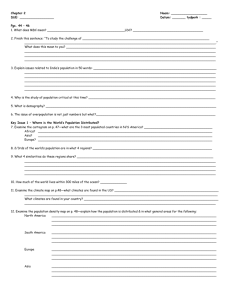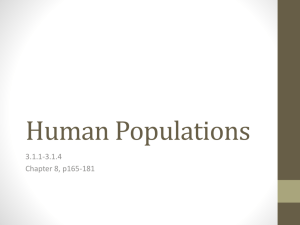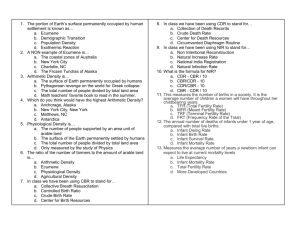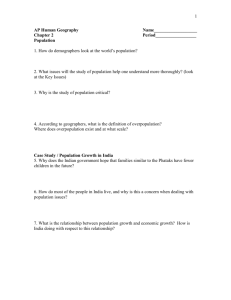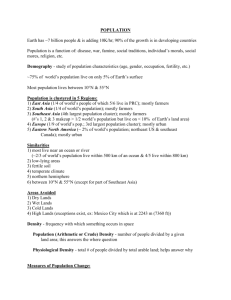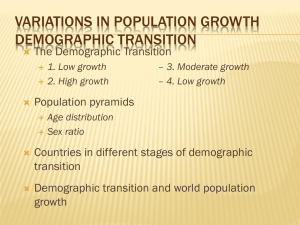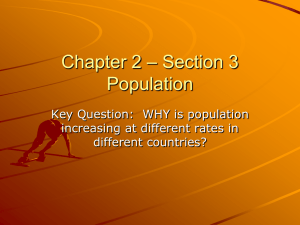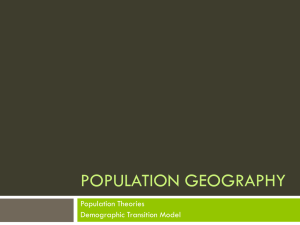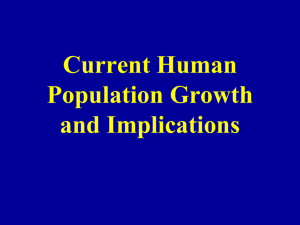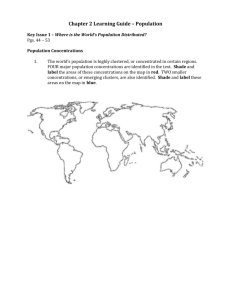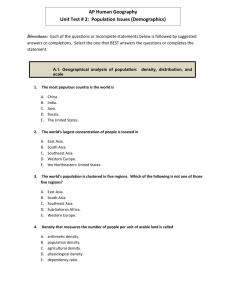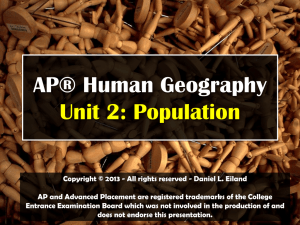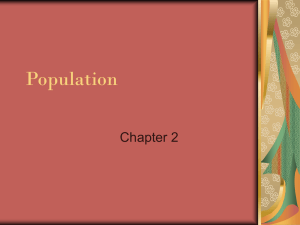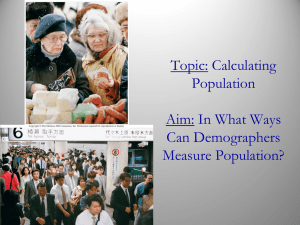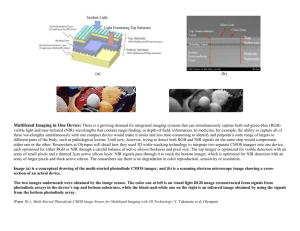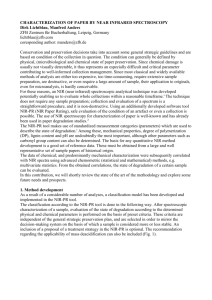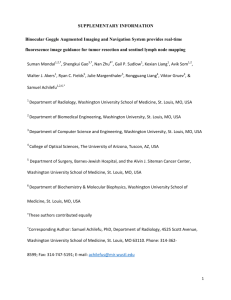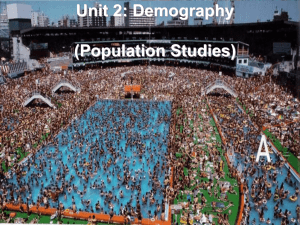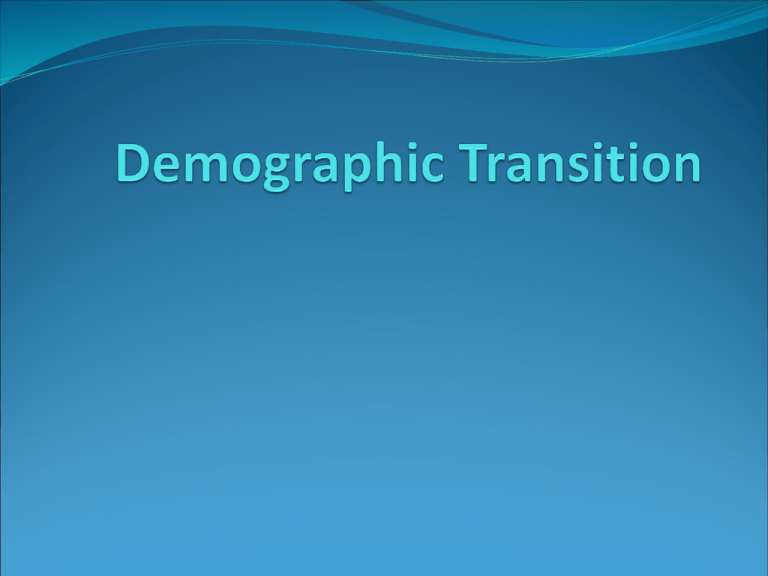
Demographic Transition Model
Demography – the study of the statistical characteristics of a
population’s births, deaths, age/sex structure, spatial distribution, etc.
Demographics – the statistical characteristics of a population’s births,
deaths, age/sex structure, spatial distribution, etc.
Crude Birth Rate (CBR) - The total number of live births in a year for
every 1000 people alive in the society. The CBR of 20 means 20 babies
are born over a one year period for every 1000 people in the country
Crude Death Rate (CDR) - the total number of deaths in a year for
every 1000 people alive in the society. A CDR of 40 means 40 people of
any age died over a one year period for every 1000 people in the country
Natural Increase Rate (NIR) - The percentage by which a population
grows (excluding migration) in a year.
Calculation: [(CBR-CDR)/1000]100 = %NIR
If the NIR is negative the population is decreasing.
Demographic Transition Model
... a theory of population change over time. Seeks to explain population
increases and decreases through variations in the birth rate and death rate.
Based on observations of historical changes in parts of the economically more
developed world (EMDW). A major criticism is its failure to take into account
changes due to migration.
Demographic Transition Model
Stage 1
CBR:
CDR:
NIR:
very high, varied +33 of 1000
very high, varied +33 of 1000
no long term increase
Life style:
hunting & gathering and early farming
practices (1st Agricultural Revolution)
Historical Period:
≈ 8,000 BCE (modern man) – 1750 CE
NIR
Cause of Stage 2:
Industrial Revolution - humans perfect
farming methods and advent of varied
technologies
Demographic Transition Model
Stage 2
NIR
CBR: very high, steady ≈40 per1000
CDR: rapidly decline, <40 down to 15 per1000
NIR: very high, sharp increase at start
then slows
Life style:
Agrarian(farmers); ability to cultivate reliable
food source as well as medical revolution
causes population explosion
Historical Period:
1750 CE – present
All countries today are in at least Stage 2 through
influence of MDCs
Cause of Stage 3:
Cultural/Social changes resulting in lower CBR
and subsequent Total Fertility Rate (TFR)
Demographic Transition Model
Stage 3
CBR: rapidly decline, <40 down to 15 per1000
CDR: slow decline, <15 down to 5 per1000
NIR: steady decline toward ZPG
Life style:
Urbanization, secondary and tertiary sector jobs
prevalent. NEED for large family declines with
change in economic structure and medical
advances reducing IMR (culture mind-set
changes)
Historical Period:
20th century – present
Cause of Stage 4:
Cultural/Social change which caused lower CBR
and Total Fertility Rate (TFR) creates Zero
Population Growth (ZPG).
Demographic Transition Model
Stage 4
CBR: very low, <10 per1000
CDR: very low, <10 per1000
NIR: ZPG; TFR of 2.1
Life style:
Urbanized – changing family structure,
changing role of women, birth control, etc.
Historical Period:
1990s – present
Stage 5?:
No definition of what a stage 5 might be as this
is a model based on historical retrospect…
Demographic Transition Model
... a theory of population change over time. Seeks to explain population
increases and decreases through variations in the birth rate and death rate.
Based on observations of historical changes in parts of the economically more
developed world (EMDW). A major criticism is its failure to take into account
changes due to migration.

